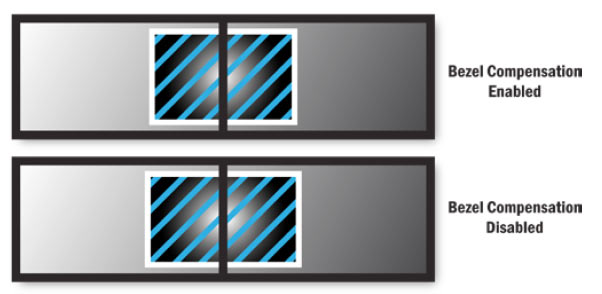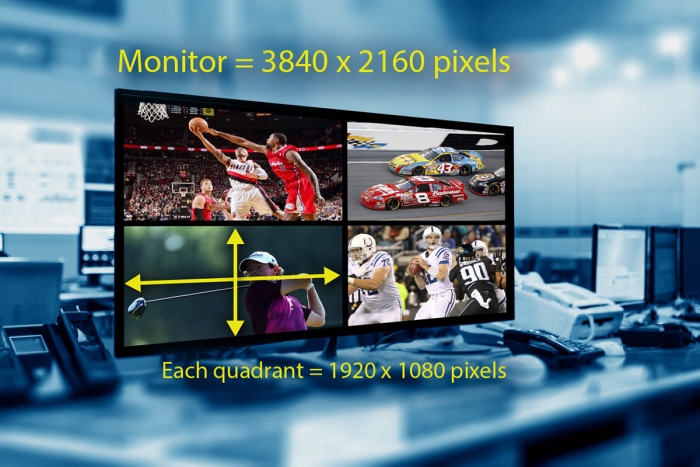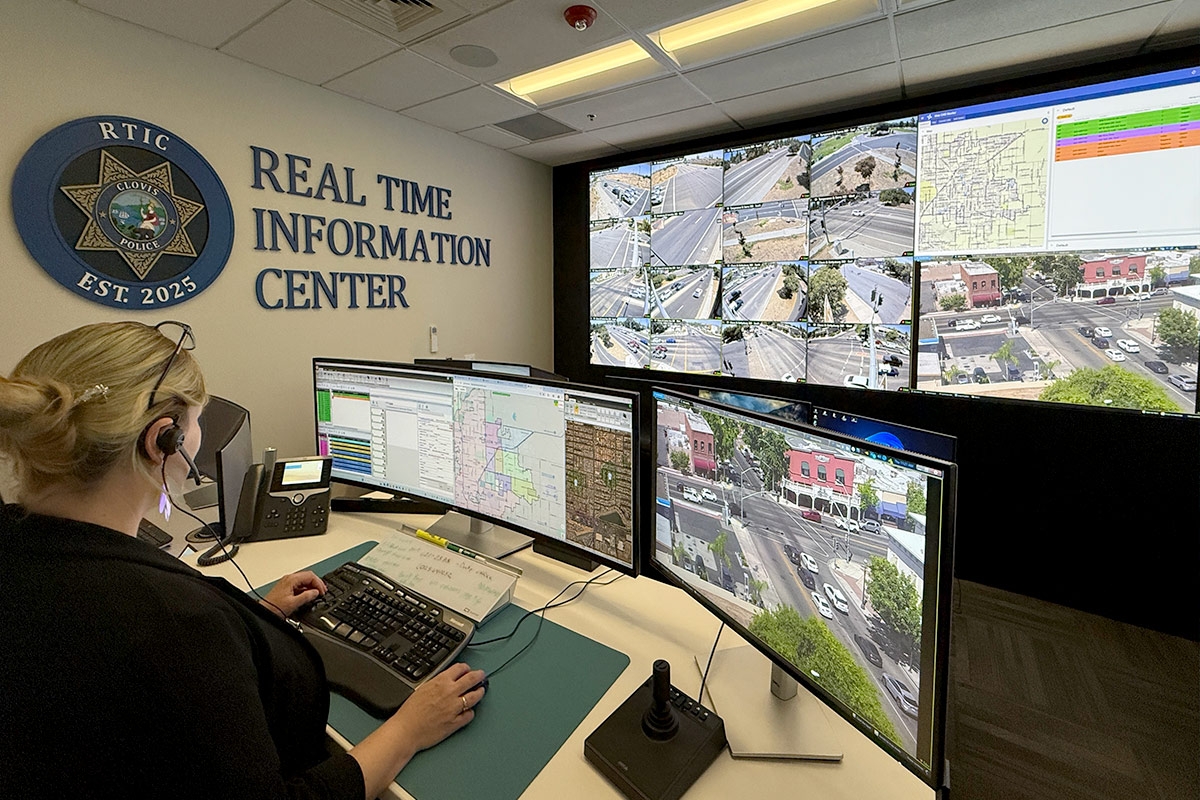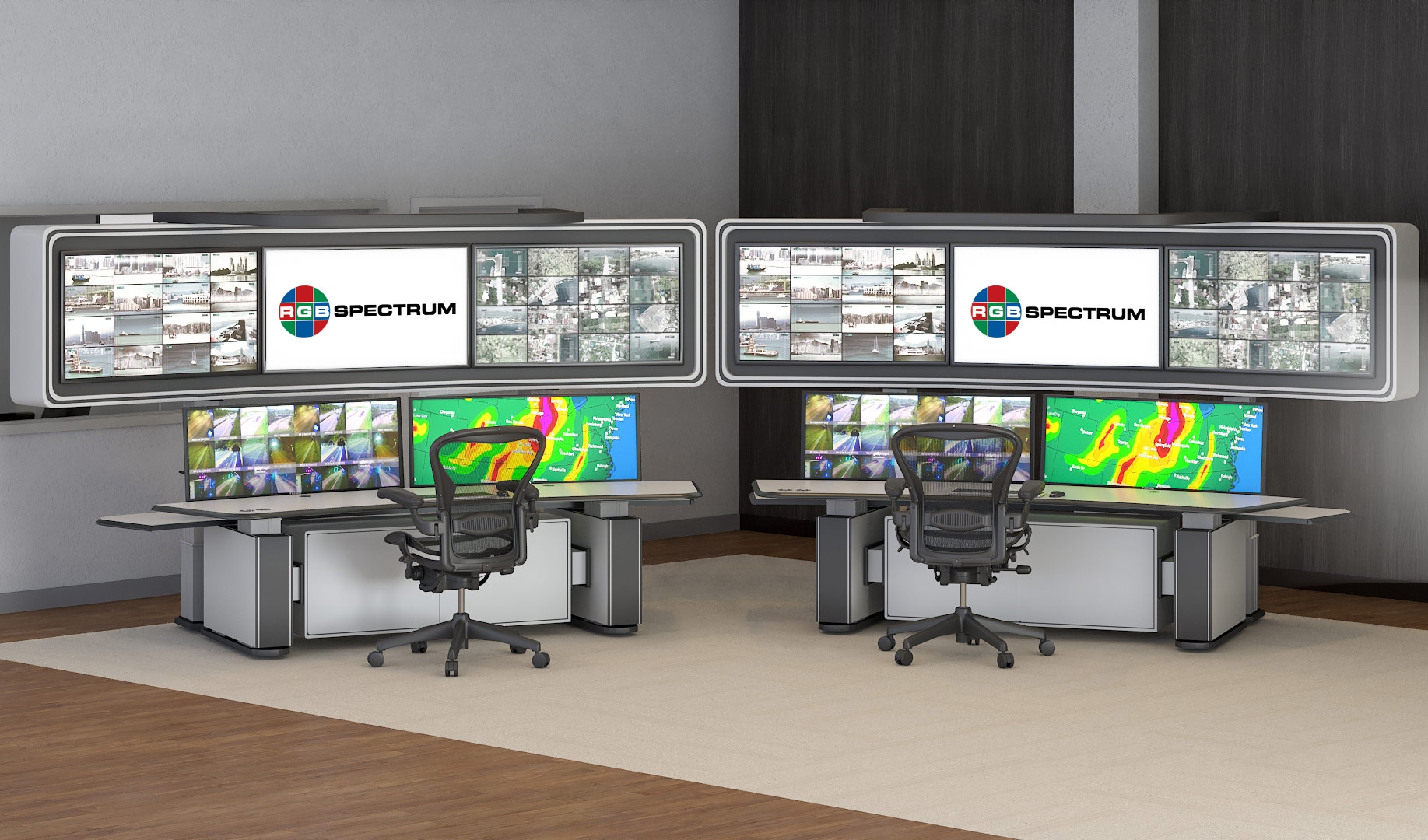4K Technology Primer: Part 2
Bezels and Video Walls
When constructing a multi-monitor video wall, another key customer consideration is the total amount of continuous display space between monitor bezels. These bezels (also known as mullions) provide a rigid support structure for the LCD panels in each display. However, on a video wall, bezels also break up the continuous appearance of images that may be scaled across multiple monitors.
As standard, all RGB Spectrum wall processors provide the ability to compensate for the width of the display bezels. With compensation enabled, an image that is scaled across multiple monitors will appear perfectly normal, as if it is located “behind” the bezels. This type of compensation would be ideal for a digital signage application, or a large wall display designed to be “eye candy.” On the other hand, for a critical security application, the customer may elect to disable compensation, so that every pixel is viewable and no pixels are hidden behind the bezels.
In the following diagram, two monitors with very large bezels are used for illustration purposes only. In the top array, bezel compensation is enabled, and the diagonal stripes appear perfectly continuous, as if they are behind the bezels. In the bottom array, bezel compensation is turned off, no pixels are hidden, and thus the diagonal strips do not appear continuous.

Monitor Array with and without bezel compensation
Note that with a 4K UHD video wall, larger format display devices can also be used, thus reducing the total number of bezels on the wall. If continuous imagery is important to one’s application, then 4K UHD resolution monitors offer this added benefit.
4K UHD Video Wall Placement
If you need to construct a video wall with the fewest bezels possible and the wall will likely be viewed from a maximum distance of 10-15 feet, then large-format 4K UHD displays (84”-104”) may be the best fit for your installation. In contrast, if a customer wants to use smaller monitors and the planned viewing distance is greater than 15 feet from the wall, then 1080p displays may be a more cost-effective choice.
Most control room applications typically involve workstations located a specific distance from a central video wall, so the viewing distance/display size guidelines can help you choose what kind of a wall is most appropriate for your system. Keep in mind that RGB Spectrum’s MediaWall V and Galileo processors can configure a range of resolutions for display on either 4K UHD or 1080p HD video walls.
Notable Exceptions
Some video wall applications are exceptions to the guidelines listed above, because they often require close-up inspection of ultra-high resolution imagery. These applications include:
- Medical imaging
- Simulation modeling for oil and gas exploration
- Manufacturing inspection systems
- Aerial reconnaissance
- Megapixel surveillance
In these cases, where short viewing distances are mandated, the highest resolution displays should be employed, and 4K UHD processing equipment such as the MediaWall V or Galileo display processor is the logical choice.
A Word About Resolution
If you elect to build a video wall out of 2K HD displays, does a 4K UHD processor still have value? Absolutely. Typically, a variety of input signals feed into a video wall processor, and these images may be spread out across multiple monitors. The pixel density of the input determines how large the image can be expanded, without negatively impacting the clarity of the original image.
For example, a 24-monitor video wall comprised of 2K HD (1920x1200) displays offers a total of 55 million pixels — enough real estate to display seven 4K input signals at full resolution. However, the lower pixel density of the monitors means that those 4K UHD signals can be up-scaled (expanded) across more monitors, while still maintaining native image quality. This use case is particularly relevant for “large wall” installations that require finely detailed imagery to be displayed (e.g., multi-megapixel surveillance, satellite telemetry, industrial control applications, and geospatial modeling).
By using 4K UHD inputs, customers have the pixel density required to configure large windows on a large wall, regardless of whether that wall is built with 2K HD or 4K UHD displays.
RGB Spectrum is a leading designer and manufacturer of mission-critical, real-time audio-visual solutions for a civilian, government, and military client base. The company offers integrated hardware, software, and control systems to satisfy the most demanding requirements. Since 1987, RGB Spectrum has been dedicated to helping its customers achieve Better Decisions. Faster.™


